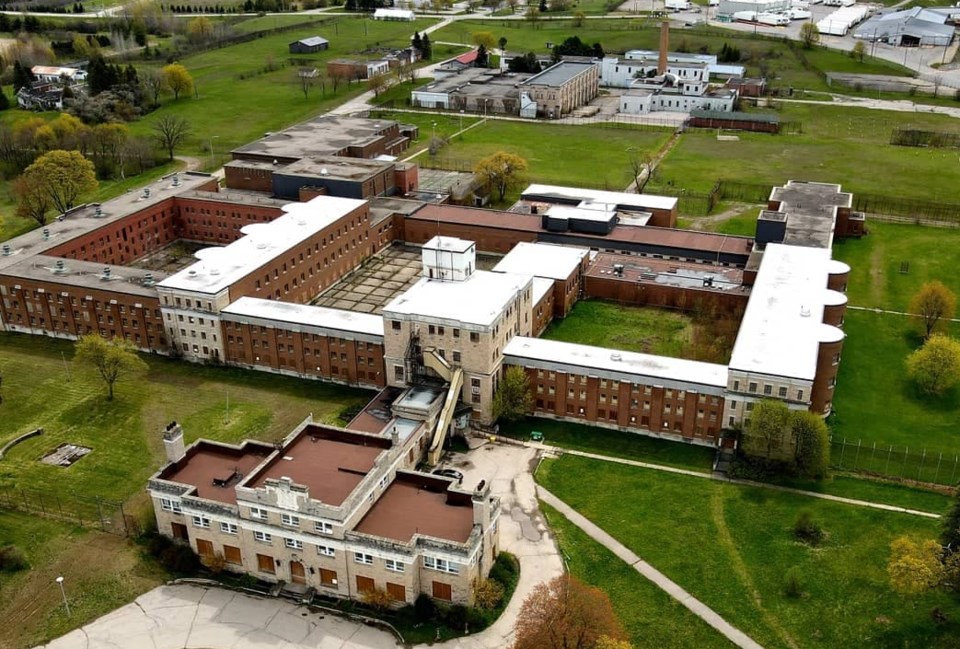The following opinion piece was written by P. Brian Skerrett, a member of GuelphToday's community editorial board and a member of Urban Park Guelph, a group aiming to have the former Guelph Correctional Centre lands turned into a national urban park.
A National Urban Park at the old Guelph Correctional Centre on York Road, stretching south along the Eramosa River, past the heritage wooden trestle bridge and the reformatory quarries, to Stone Rd., at McQuillans Bridge.
This is literally an idea whose time has come. For over 20 years, this property has languished and suffered not so much from a lack of vision, but from too much vision and no execution. The federal government considered making it an immigration detention centre, it was once part of an innovation district and it's been recommended as a museum, a university campus and even a jail. None of these visions took hold.
Enjoyed for over two decades by hikers, naturalists, dog walkers, fishers, bird watchers, canoeists and kayakers, climbers and walkers. It's been used by University of Guelph classes and the Guelph Outdoor School. It is cared for by Yorklands Green Hub, the Guelph Hiking Trail Club, Water Watchers and more. We just have to recognize what our land use has been telling us: this is a place for nature and people to converge.
In 2021 the federal government announced a plan to establish 15 national urban parks with three conditions; each park had to preserve nature, connect people to nature, and advance reconciliation with Indigenous peoples. Urban Park Guelph is demonstrating how this former Ontario Reformatory can accomplish these visions and more. We are communicating to all levels of government, federal, provincial, municipal and Indigenous, that this is one of the best sites in Canada to achieve these goals and Guelph should be one of the fifteen sites.
We can take a place of pain and suffering and turn it into a place of conservation, healing, education, wonder, and sanctuary. We can acknowledge historical wrongs and how they contribute to current injustice. We can conserve natural spaces and restore them too. This park could be a hub and bring other green spaces under the National Park umbrella. Our waterways and trails are powerful links to green spaces that we can continue to protect as part of a national urban ark constellation, in and around Guelph
For those who say, this is already a free space, why would you want to charge admission, we can answer that the park must preserve free public access. This is surplus provincial land that will likely be developed to another purpose that does not guarantee any access, free or otherwise.
For those who say, why a park when we need housing, we reply that of over 100 hectares on this site, far less than 20 per cent is developable. Flood plain, natural heritage setbacks and heritage buildings and structures are among the limitations to housing here. The City of Guelph has much of it zoned as adaptive reuse... not zoned as housing.
For those suggesting an institutional site, we say we will always find places for our institutions, but we will never replace a site like this once it's gone.
For those who say this is a nice "want", when our property taxes are climbing, this; Parks Canada Heritage places generate over $5 billion to Canada's GDP, $600 million in taxes and almost 50,000 jobs are associated with Parks Canada's Heritage Places. Visitor spending in US National Parks is 10 to one for every dollar of investment. In economic terms, this place is a non-productive asset. Guelph's National Urban Park would be a revenue generating asset.
Once in a very rare while, there is a win-win-win scenario. Urban Park Guelph believes this is one.
Urban Park Guelph's petition before parliament has generated over 3,000 signatures from every province and territory.
The Mississaugas of the Credit First Nation are the first level of government to publicly recognize the strength of this proposal. Who's next?
